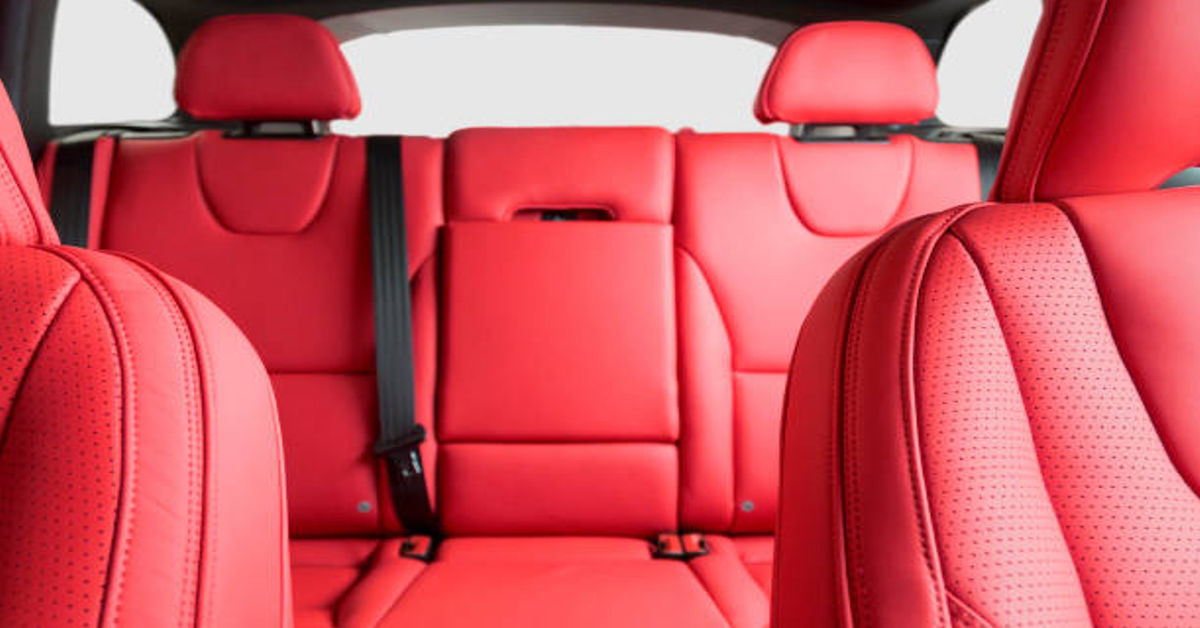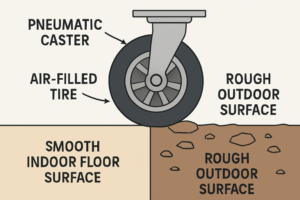A car is more than a machine designed to move from one point to another—it is a personal space, a travel companion, and in many cases, an extension of one’s lifestyle. Among the many aspects that define a car’s quality, Car with Seats are one of the most vital. They directly affect comfort, safety, ergonomics, and even the resale value of a vehicle. A well-designed seat not only supports the driver and passengers physically but also influences their overall travel experience.
In this comprehensive guide, we will explore everything about car seats—their types, materials, ergonomics, safety features, innovations, and how different seating configurations impact performance and comfort.
1. The Role of Seats in a Car
Seats are the primary interface between the occupants and the car itself. While engines define performance, and design defines appeal, seats define comfort. The modern car seat does far more than provide a surface to sit on. It is engineered for posture support, impact absorption, temperature control, and even digital interaction.
In earlier automobiles, seats were simple benches made of wood or basic cushions. Over the decades, automotive design evolved drastically—seats became ergonomic, adjustable, and increasingly specialized. The driver’s seat became a command center, while rear seats became more luxurious and feature-packed in high-end models.
Seats are no longer just furniture inside a car—they are complex systems made of multiple layers, including foam, frames, upholstery, electronic mechanisms, and sensors.
2. Types of Car Seats Based on Function
Cars come with various seat types, each designed for a specific role and passenger requirement. Let’s examine the most common ones:
| Type of Seat | Description | Commonly Found In |
|---|---|---|
| Bucket Seats | Individually shaped seats with side support, designed for single occupants. | Sports cars, sedans, compact cars |
| Bench Seats | Continuous seat extending across the width of the vehicle; can seat multiple passengers. | Older cars, trucks, minivans |
| Captain Seats | Individual, luxurious seats often with armrests and recline function. | SUVs, minivans, luxury cars |
| Split Seats | Seats divided into foldable sections (e.g., 60/40 or 40/20/40) for cargo flexibility. | Hatchbacks, SUVs |
| Reclining Seats | Adjustable seats allowing backrest movement for added comfort. | Most modern cars |
| Power Seats | Electrically adjustable seats with memory functions. | Premium vehicles |
| Heated/Ventilated Seats | Seats with integrated heating or cooling elements. | Luxury cars |
| Massage Seats | Include vibration or pressure mechanisms for comfort during long drives. | High-end vehicles |
Each seat type represents a different balance between practicality and luxury. For instance, bucket seats enhance sporty driving and lateral support, while bench seats emphasize capacity and convenience.
3. Seating Capacity: How Many Seats Does a Car Have?
Cars are categorized by the number of seats they provide. The seating capacity determines the car’s design, target audience, and legal classification in some regions.
| Seating Capacity | Typical Vehicle Type | Example Use Case |
|---|---|---|
| 2-Seater | Sports cars, convertibles | Solo or couple driving |
| 4-Seater | Coupes, compact sedans | Small families |
| 5-Seater | Sedans, hatchbacks, crossovers | Most common for families |
| 6-Seater | SUVs, minivans (captain seats) | Family trips with comfort |
| 7-Seater | Full-size SUVs, MPVs | Large families or group travel |
| 8+ Seater | Vans, minibuses | Commercial or tourism use |
A 5-seater remains the most popular configuration globally, offering the right balance of space, economy, and practicality. However, as lifestyles diversify, 7-seater SUVs and MPVs have become increasingly popular among families who prioritize space and flexibility.
4. Car Seat Design and Ergonomics
Ergonomics is the science of designing for human comfort and efficiency. Modern car seats are created through detailed biomechanical analysis to reduce fatigue and promote correct posture during long drives.
A good seat design maintains the natural “S” curve of the spine, supports the lumbar region, and distributes body weight evenly. Automotive engineers use computer models and real-world testing to shape the seat cushion, backrest, and headrest for optimal comfort.
Key Elements of Car Seat Design
| Feature | Purpose |
|---|---|
| Cushion Padding | Provides softness and pressure absorption |
| Lumbar Support | Reduces back strain and supports lower spine |
| Bolsters | Offer lateral stability during cornering |
| Headrests | Prevent whiplash during collisions |
| Adjustability | Allows users to tailor seating position |
| Seat Height and Angle | Enhances visibility and circulation |
In high-performance cars, seats are often designed with reinforced bolsters to hold the driver firmly during fast turns, while luxury vehicles focus on plush cushioning and electronic adjustments.
5. Car Seat Materials and Upholstery Options
The choice of seat material defines the overall look, comfort, and maintenance level of a car’s interior.
| Material Type | Features | Advantages | Disadvantages |
|---|---|---|---|
| Fabric | Cloth or woven material | Breathable, affordable, non-slippery | Harder to clean, absorbs odors |
| Leather | Natural or synthetic leather | Luxurious, easy to wipe, durable | Expensive, heats up in sun |
| Leatherette (PU) | Artificial leather alternative | Cost-effective, easy to maintain | Less breathable |
| Vinyl | Plastic-based material | Water-resistant, cheap | Uncomfortable in hot weather |
| Alcantara/Suede | Premium synthetic microfiber | Soft, grippy, luxurious feel | Requires delicate care |
| Mesh | Net-like material | Excellent ventilation | Common in basic models only |
Modern vehicles often combine materials—for example, leather-trimmed fabric seats or perforated leather with cooling functions—to balance aesthetics with comfort and practicality.
6. Safety Features in Car Seats
Car seats are integral to vehicle safety systems. They protect passengers during sudden stops or collisions by controlling movement and supporting key body areas.
Major Safety Features Include:
- Seatbelts: The primary restraint system designed to secure the occupant in place.
- Headrests: Prevent whiplash injuries during rear-end impacts.
- Airbags Integration: Some modern seats have side airbags embedded within to protect the torso and pelvis.
- Anti-Submarining Design: Prevents the passenger from sliding under the seatbelt during a crash.
- Child Seat Anchors (ISOFIX/LATCH): Provide secure attachment points for child safety seats.
- Active Headrests: Automatically move forward in a crash to reduce neck injury.
In premium vehicles, safety systems work in coordination with sensors embedded in seats to adjust tension, airbag timing, and posture support dynamically during a collision.
7. Child Car Seats and Safety Regulations
Children require special restraint systems tailored to their age, weight, and height. Using proper child car seats dramatically reduces the risk of injury in accidents.
| Type of Child Seat | Age Group | Placement |
|---|---|---|
| Infant Seat | 0–1 years (rear-facing) | Rear seat, facing backward |
| Convertible Seat | 1–4 years | Rear or forward-facing |
| Booster Seat | 4–12 years | Forward-facing, with seatbelt |
| All-in-One Seat | 0–12 years | Adjustable configuration |
Regulations differ globally, but most countries mandate rear-seat placement for child safety seats and standardized anchor systems (like ISOFIX or LATCH).
8. Innovations in Modern Car Seats
Automotive seating technology has evolved beyond mere comfort. Innovation now centers on smart systems, sustainability, and health-focused design.
a. Smart and Connected Seats
Modern vehicles are integrating intelligent sensors that adjust seat posture, lumbar support, and even temperature automatically. Some luxury models use cameras or weight sensors to detect driver fatigue and prompt breaks.
b. Climate-Controlled Seating
Heated and ventilated seats are now common in mid to high-end cars. Premium variants even offer multi-zone temperature control or air-conditioning ducts within the seat.
c. Memory and Massage Features
Cars with multiple drivers often include seat memory that saves personalized settings. Massage seats use electric motors or air bladders to provide dynamic comfort on long drives.
d. Sustainable Materials
Eco-friendly materials like recycled PET fabric, vegan leather, and bamboo fiber upholstery are replacing traditional leather to reduce environmental impact.
e. Adaptive Safety Technology
Advanced systems like Pre-Safe (in Mercedes-Benz) adjust seat positions when a collision is imminent, ensuring maximum protection.
9. Comfort Factors: What Makes a Seat Truly Comfortable
A seat’s comfort is determined by how it balances support, flexibility, and cushioning. Several factors contribute to this:
- Seat Height and Cushion Depth: Determines visibility and ease of entry.
- Lumbar Support: Adjustable lumbar zones prevent backache.
- Seat Angle: A slight backward tilt reduces leg pressure.
- Material Breathability: Prevents sweating and discomfort in long drives.
- Vibration Dampening: High-quality foam and suspension reduce road vibrations.
- Armrests and Headrests: Improve posture and relaxation.
Luxury brands often collaborate with orthopedic associations to design scientifically optimized seating for posture and spinal health.
10. Maintenance and Care of Car Seats
Proper maintenance extends the lifespan and aesthetics of car seats. Different materials require different care methods.
| Material | Cleaning Method | Maintenance Tip |
|---|---|---|
| Fabric | Vacuum and mild upholstery cleaner | Avoid spills; use seat covers |
| Leather | Wipe with damp cloth and leather conditioner | Keep away from direct sunlight |
| Leatherette | Clean with soap and water | Avoid sharp objects |
| Suede/Alcantara | Use microfiber brush and dry cleaner | Avoid water exposure |
Regular maintenance prevents cracking, discoloration, and odor buildup, ensuring a car’s interior remains pleasant and valuable over time.
11. Seating Layouts and Configurations
The layout of seats influences both passenger experience and cargo flexibility. Common layouts include:
| Layout Type | Configuration | Best For |
|---|---|---|
| 2+2 | Two front + two small rear seats | Sports cars |
| 2+3 | Two front + three rear | Sedans, SUVs |
| 2+2+2 | Three rows of two seats each | Family SUVs |
| 2+3+2 | Three-row layout | Large SUVs, MPVs |
| 3+3 | Two rows of benches | Vans |
Foldable and removable seats are common in SUVs and minivans to enhance versatility. Some advanced cars feature flat-folding and stowable seats to expand cargo space instantly.
12. Future of Car Seats: Smart, Sustainable, and Adaptive
The future of automotive seating will blend technology, sustainability, and personalization. As electric and autonomous vehicles become mainstream, seating design will shift from driver-centric to passenger-focused.
Trends to Watch:
- Swivel Seats: Allow rotation in autonomous vehicles for face-to-face interaction.
- Shape-Memory Foam: Adapts dynamically to body contours.
- Bio-Sensing Seats: Monitor heart rate, posture, and temperature.
- Sustainable Materials: Recycled fibers and organic composites.
- Modular Configurations: Easily removable or rearrangeable seats for multiple uses.
Seats will become interactive components that enhance both health and connectivity, making travel safer and more enjoyable.
13. Choosing the Right Car Seat for Your Needs
When selecting a car or upgrading seats, consider the following:
- Purpose: Daily commuting, family trips, or performance driving.
- Seating Capacity: Based on family size or travel needs.
- Material Preference: Comfort vs durability.
- Adjustability: Manual or electric controls.
- Safety Certification: ISOFIX, airbag compatibility, and crash ratings.
- Budget: Balancing luxury features with practicality.
Always test seat comfort during a test drive. A few minutes of sitting can reveal how supportive or restrictive a seat feels.
14. Summary: Why Seats Matter More Than You Think
Car seats are not merely accessories—they define your comfort, health, and safety every time you travel. The evolution from basic benches to intelligent ergonomic systems highlights the growing focus on human-centered design in the automotive industry. Whether it’s a two-seater sports car with racing buckets or a seven-seater family SUV with reclining captain chairs, the quality and design of the seat influence your overall driving satisfaction.
In essence, when choosing a car with seats, you’re choosing how every journey will feel—comfortable, safe, and memorable.
Frequently Asked Questions (FAQs)
1. What is the most common seating configuration in cars?
The most common configuration is a 5-seater layout—two front seats and a three-passenger rear bench. It offers the best balance of space, comfort, and economy.
2. Which material is best for car seats?
Leather provides luxury and easy cleaning, while fabric is breathable and affordable. The choice depends on climate, lifestyle, and maintenance preferences.
3. How can I keep my car seats in good condition?
Regular cleaning, conditioning (for leather), and using seat covers help prevent stains, cracks, and fading. Avoid exposure to harsh sunlight for long periods.
4. What safety features should I look for in car seats?
Look for ISOFIX anchors, adjustable headrests, seatbelt pre-tensioners, and side airbags integrated into the seat design.
5. Are ventilated and massage seats worth it?
Yes, especially for long drives or hot climates. They improve comfort, reduce fatigue, and enhance the luxury experience inside the vehicle.









